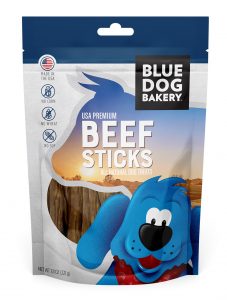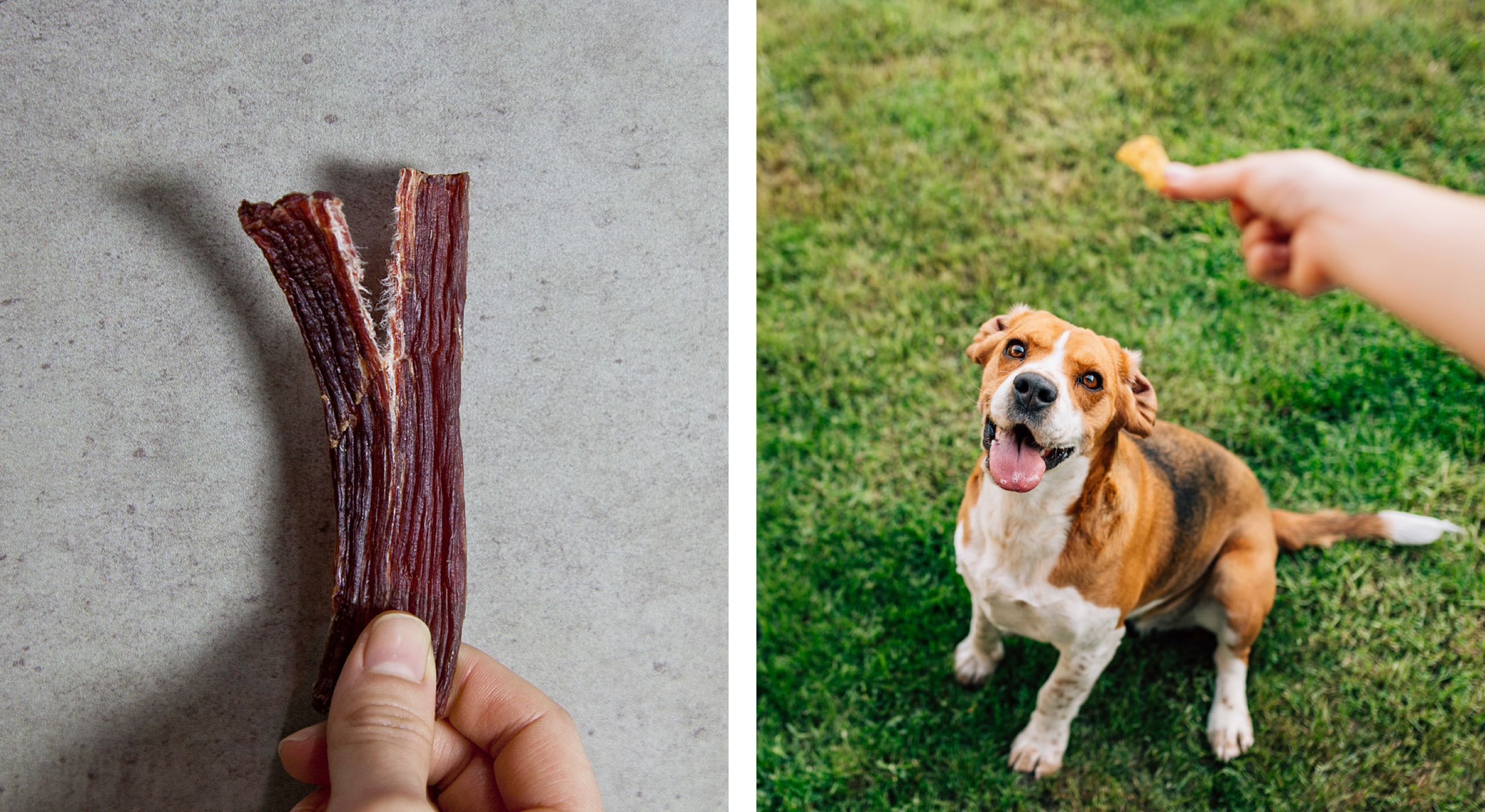Why “Human-Grade”? Investigating a Pet Food Claim
Among the industries we serve, the pet products segment ranks as one of the most dynamic. New products and companies rise and fall on a regular basis, and consumers show themselves willing to at least trial new products frequently. In this ever-changing marketplace, however, pet food and products steadily mirror trends in human food toward higher quality, more natural ingredients. Consumers expect simpler ingredient statements and more transparent supply chains all the time, with no sign that the trend will slow or reverse. Within this trend, one claim stands out: “human-grade” pet food.
The “Human-grade” Claim

Increasing numbers of pet food and treat suppliers make products suitable for human consumption, following human food standards all through their production process. Our own partner Blue Dog Bakery produces dog jerky treats that one unnamed Creative Director on our team feels comfortable eating (and does!).
The claim “human-grade” is striking not just because it conjures the mental image of humans consuming dog treats, but because of the business questions it raises. Clearly, the claim means to mark off these products as super-premium: if this pet food was made to meet human standards, the reasoning would go, it must be even better for our animal companions. However, one would also suspect that such an upgrade in manufacturing processes would bring significant increase in costs. How can such overhead increases be worthwhile for these brands? Is the marketing boost worth it?
Costs and Supply of Human-Grade Pet Products
In reality, the claim “human-grade” need not imply a notable increase in costs. For some brands, it may not increase costs at all. How can that be? It’s about the supply chain and trends in human food.
Eliminating Food Waste
Food waste has become a hot topic in the food industry of late, with influential companies and celebrities highlighting the problem in pursuit of greater sustainability. Eliminating food waste makes good business sense too, as every pound of wasted product implies a financial loss for businesses somewhere in their supply chain. With that push to eliminate waste, food brands are seeking new outlets for waste product: products that may have cosmetic defects or lack other suitable qualities for the human market.
Enter pet food. By taking advantage of byproduct supply streams from the human food market, pet food and treat companies get attractive ingredient pricing, work against the food waste crisis, and obtain a desirable claim all in one. A more efficient supply chain leads to benefits from the supply end to the consumer end, creating a better system for businesses, consumers, and pets alike.
Rewriting Modern Marketing
All of this means that effective modern marketing can’t adopt a purely B2B or B2C perspective any more. It must look at the whole ecosystem (another candidate for the E in B2E) of contemporary life, reading the culture and understanding the network of relationships we live in. Only a move to a true B2E perspective can prepare your brand for a strong future in the digital age.
Ultimately, we may not all choose to share our pets’ human-grade food and treats, but we all benefit from a better-integrated and less wasteful ingredient supply chain. MarketPlace can help you make those connections, from building business-to-business relationships to better telling your story to consumers. Whether established brand or startup, human food or human-edible, we can help. Let’s chat.

